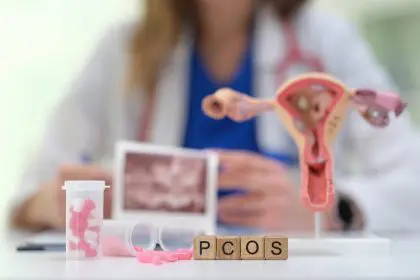Chest discomfort in women presents unique challenges for both patients and healthcare providers, as symptoms often manifest differently than the classic presentations typically associated with male cardiac events. Women experiencing chest discomfort may dismiss their symptoms as less serious conditions, potentially delaying crucial medical evaluation when prompt treatment could be lifesaving.
The complexity of female chest discomfort stems from the interaction between hormonal influences, anatomical differences, and social factors that affect how symptoms develop and are perceived. Understanding these unique presentations becomes essential for recognizing when chest discomfort requires immediate medical attention versus when it may indicate less urgent but still important health concerns.
Women’s chest discomfort can originate from cardiac, pulmonary, gastrointestinal, musculoskeletal, or psychological sources, with symptoms that may overlap significantly between different conditions. This overlap makes accurate diagnosis challenging and emphasizes the importance of comprehensive medical evaluation when concerning symptoms develop.
1. Heart disease presents differently in women
Coronary artery disease in women often produces chest discomfort that differs significantly from the crushing, left-sided chest pain typically described in medical literature. Women may experience chest pressure, squeezing, or burning sensations that come and go rather than persistent severe pain.
The discomfort may feel more like indigestion or heartburn, leading many women to initially seek treatment for gastrointestinal problems rather than cardiac concerns. This misleading presentation can delay appropriate cardiac evaluation and treatment, potentially worsening outcomes.
Women are more likely to experience chest discomfort that radiates to the back, jaw, or arms in patterns that differ from typical male presentations. The pain may also be accompanied by unusual fatigue, nausea, or shortness of breath that seems disproportionate to the chest discomfort level.
Microvascular disease affects women more frequently than men, causing chest pain that may occur with normal-appearing coronary arteries on standard testing. This condition can produce significant symptoms that require specialized evaluation and treatment approaches.
Hormonal fluctuations throughout the menstrual cycle, pregnancy, and menopause can influence how heart disease symptoms manifest, with some women experiencing increased chest discomfort during specific hormonal phases. These patterns can provide important diagnostic clues when properly recognized.
2. Anxiety and panic disorders create physical symptoms
Panic attacks frequently cause chest discomfort that can be indistinguishable from cardiac symptoms, creating significant distress and confusion for women experiencing these episodes. The chest pain associated with panic attacks often includes sharp, stabbing sensations or pressure that may last for minutes or hours.
The physical symptoms of anxiety can include rapid heartbeat, shortness of breath, sweating, and chest tightness that closely mimic heart attack symptoms. This similarity makes it crucial to rule out cardiac causes before attributing chest discomfort solely to anxiety disorders.
Chronic anxiety can create persistent chest muscle tension that leads to ongoing discomfort and pain. This muscular tension may be most noticeable during periods of high stress or emotional strain, creating patterns that help distinguish anxiety-related chest pain from other causes.
The relationship between anxiety and chest discomfort can become cyclical, where fear of cardiac problems increases anxiety levels, which in turn worsen chest symptoms. Breaking this cycle often requires both medical evaluation and anxiety management strategies.
Women may be more likely to experience somatic symptoms of anxiety, including chest discomfort, rather than purely emotional symptoms. This tendency can make anxiety disorders more difficult to recognize and treat appropriately.
3. Hormonal changes affect chest sensations
Estrogen fluctuations throughout the menstrual cycle can influence chest discomfort, with some women experiencing increased symptoms during specific phases of their cycle. These hormonal influences can affect both cardiac and non-cardiac sources of chest pain.
Pregnancy brings significant hormonal and physical changes that can create new patterns of chest discomfort. The expanding uterus, increased blood volume, and hormonal shifts can all contribute to chest sensations that may be concerning but are often benign.
Menopause and perimenopause involve dramatic hormonal changes that can affect cardiovascular function and increase the likelihood of chest discomfort. The loss of estrogen’s protective effects on blood vessels may contribute to increased cardiac risk during this life stage.
Hormone replacement therapy can influence chest symptoms in complex ways, sometimes alleviating discomfort while occasionally contributing to increased cardiac risk in certain populations. The timing and type of hormone therapy can significantly impact these effects.
Birth control pills and other hormonal medications may affect chest symptoms through their influence on blood clotting, blood pressure, and vascular function. Women using hormonal medications should be aware of potential chest discomfort as a side effect requiring evaluation.
4. Digestive issues mimic cardiac symptoms
Gastroesophageal reflux disease creates chest burning and pressure that can be difficult to distinguish from cardiac pain, particularly when symptoms occur during physical exertion or stress. The proximity of the esophagus to the heart makes this distinction particularly challenging.
Hiatal hernia can cause chest discomfort that worsens with certain positions or after eating, sometimes accompanied by shortness of breath that may seem cardiac in nature. The symptoms can be particularly pronounced when lying down or bending over.
Gallbladder disease may present with chest discomfort that radiates to the back or shoulder, especially after eating fatty meals. This pattern of symptoms can sometimes be confused with cardiac problems, particularly in women who are at higher risk for both conditions.
Stomach ulcers or gastritis can create chest discomfort that may be accompanied by nausea and changes in appetite. The timing of symptoms in relation to meals can provide important clues for distinguishing digestive causes from cardiac problems.
Irritable bowel syndrome and other digestive disorders can cause referred pain that reaches the chest area, creating discomfort that may be difficult to localize and identify. The relationship between digestive symptoms and chest discomfort can help guide appropriate evaluation.
5. Breast-related conditions cause chest wall pain
Fibrocystic breast changes can create chest wall discomfort that may be most noticeable during certain phases of the menstrual cycle. This cyclical pattern of symptoms can help distinguish breast-related chest pain from cardiac causes.
Mastitis or breast infections can cause significant chest discomfort that may be accompanied by fever, redness, and swelling. The localized nature of these symptoms usually helps distinguish them from cardiac problems.
Breast cysts or benign breast lumps may cause chest discomfort that can be quite concerning until properly evaluated. The pain may be sharp or aching and can sometimes radiate to the armpit or shoulder area.
Costochondritis, inflammation of the cartilage connecting ribs to the breastbone, often causes chest pain that worsens with movement or pressure. This condition can create sharp, stabbing pain that may be mistaken for cardiac problems.
Muscle strain in the chest wall from exercise, heavy lifting, or repetitive motions can create ongoing chest discomfort that may persist for days or weeks. The relationship between physical activity and symptom onset can help identify musculoskeletal causes.
6. Lung conditions affect breathing and comfort
Asthma can cause chest tightness and discomfort that may be accompanied by wheezing, coughing, or shortness of breath. These symptoms may worsen with exercise, allergen exposure, or during certain weather conditions.
Pneumonia or other respiratory infections can create chest discomfort that may be accompanied by fever, cough, and difficulty breathing. The presence of systemic symptoms often helps distinguish respiratory causes from cardiac problems.
Pulmonary embolism represents a serious condition that can cause sudden onset chest pain along with shortness of breath and sometimes coughing up blood. This condition requires immediate medical attention and can be life-threatening if untreated.
Pleurisy, inflammation of the lining around the lungs, creates sharp chest pain that typically worsens with deep breathing or coughing. The relationship between breathing and pain intensity can help identify this condition.
Chronic obstructive pulmonary disease can cause ongoing chest discomfort along with progressive shortness of breath and reduced exercise tolerance. The gradual onset and association with smoking history can provide diagnostic clues.
7. Medication side effects contribute to symptoms
Blood pressure medications, particularly certain types, can cause chest discomfort as a side effect. The timing of symptom onset in relation to medication changes can provide important diagnostic information.
Antidepressants and other psychiatric medications may contribute to chest discomfort through various mechanisms, including effects on heart rhythm or anxiety levels. The relationship between medication timing and symptom development can be revealing.
Stimulant medications, including those used for attention deficit disorders or weight loss, can cause chest discomfort through their effects on heart rate and blood pressure. These medications require careful monitoring for cardiovascular side effects.
Over-the-counter medications, including decongestants and certain pain relievers, can contribute to chest discomfort in some individuals. The frequent use of these medications may create ongoing symptoms that require evaluation.
Herbal supplements and alternative remedies can sometimes contribute to chest discomfort through interactions with other medications or direct effects on cardiovascular function. A complete medication and supplement history becomes important for evaluation.
8. Autoimmune conditions affect multiple systems
Lupus and other autoimmune disorders can cause chest discomfort through inflammation of the heart lining, lung lining, or chest wall structures. These conditions often present with multiple system involvement that can complicate diagnosis.
Rheumatoid arthritis can affect the chest wall and rib cage, creating discomfort that may worsen with movement or touch. The presence of joint symptoms elsewhere in the body can provide diagnostic clues.
Scleroderma may affect the esophagus and other chest structures, creating discomfort that can be difficult to distinguish from cardiac or digestive problems. The presence of skin changes and other systemic symptoms can guide evaluation.
Inflammatory bowel diseases can sometimes cause chest discomfort through systemic inflammation or related complications. The presence of digestive symptoms can help identify these underlying conditions.
Thyroid disorders can contribute to chest discomfort through their effects on heart rate, rhythm, and overall cardiovascular function. Both overactive and underactive thyroid conditions can create concerning chest symptoms.
9. Physical trauma creates ongoing discomfort
Rib fractures from accidents, falls, or sports injuries can create persistent chest discomfort that may worsen with movement, breathing, or pressure. The history of trauma and specific pain patterns can help identify these injuries.
Muscle strains in the chest wall from exercise, lifting, or sudden movements can create ongoing discomfort that may persist for weeks. The relationship between physical activity and symptom onset provides important diagnostic information.
Previous chest surgeries or procedures can create scar tissue and ongoing discomfort that may be concerning for individuals unfamiliar with normal healing processes. The location and timing of symptoms relative to procedures can be revealing.
Motor vehicle accidents can cause chest trauma that may not be immediately apparent but develops into ongoing discomfort over time. The mechanism of injury and timing of symptom development can provide diagnostic clues.
Repetitive strain from work activities or hobbies can create cumulative chest wall discomfort that may gradually worsen over time. The relationship between activities and symptom patterns can help identify these causes.
10. Sleep disorders contribute to chest symptoms
Sleep apnea can contribute to chest discomfort through its effects on oxygen levels and cardiovascular stress during sleep. The presence of snoring, daytime fatigue, and morning headaches can provide diagnostic clues.
Insomnia and poor sleep quality can contribute to chest discomfort through increased stress levels and fatigue. The relationship between sleep patterns and symptom severity can be revealing.
Restless leg syndrome and other sleep movement disorders can contribute to overall discomfort that may include chest sensations. The timing of symptoms in relation to sleep attempts can provide diagnostic information.
Night sweats and sleep disruptions from various causes can contribute to chest discomfort through their effects on overall health and stress levels. The pattern of nighttime symptoms can be diagnostically significant.
Sleep position problems, including sleeping on the stomach or with poor pillow support, can create chest wall discomfort that may persist into daytime hours. Simple changes in sleep habits may alleviate these symptoms.
When to seek immediate medical attention
Chest discomfort accompanied by shortness of breath, nausea, sweating, or pain radiating to the jaw or arm requires immediate medical evaluation regardless of age or perceived risk factors. These symptoms may indicate serious cardiac problems requiring prompt treatment.
Sudden onset severe chest pain, particularly if accompanied by difficulty breathing or feeling faint, should prompt immediate emergency medical attention. The rapid development of symptoms can indicate serious conditions requiring urgent intervention.
Chest discomfort that worsens progressively over hours or days, particularly if accompanied by other concerning symptoms, requires medical evaluation even if initial symptoms seemed mild or manageable.
Any chest discomfort that feels different from previous experiences or is accompanied by unusual symptoms should be evaluated promptly, as changes in symptom patterns can indicate developing serious conditions.
The combination of chest discomfort with symptoms like fever, persistent cough, or unexplained weight loss may indicate serious underlying conditions requiring comprehensive medical evaluation and treatment.
Understanding the diverse causes of chest discomfort in women empowers individuals to seek appropriate medical care while avoiding unnecessary anxiety about benign conditions. The key lies in recognizing when symptoms require urgent evaluation versus when they can be addressed through routine medical care and lifestyle modifications.















